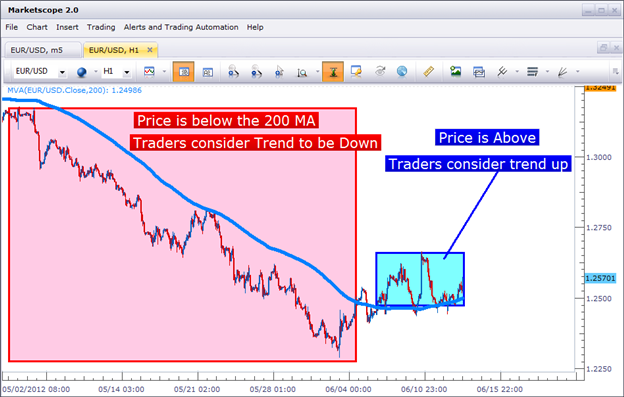TIPS FOR TRADERS 7 Ways Moving Averages Can Mislead
Post on: 24 Июль, 2015 No Comment

By: Kalen Smith
Moving averages are an important focus for technical analysts, but its important not to regard them as perfect indicators. Here are seven subtle, yet significant risks posed by moving averages.
A moving average is the average price of a security over a specified period of time. Analysts frequently use moving averages as analytical tools to make it easier to follow market trends, as securities move up and down.
Moving averages can establish trends and measure momentum, therefore, they can be used to indicate when an investor should buy or sell a specific security. Investors can also use moving averages to identify support or resistance points in order to gauge when prices are likely to change direction.
By studying historical trading ranges, support and resistance points are established where the price of a security reversed its upward or downward trend in the past. These points are then used to make buy or sell decisions.
Unfortunately, moving averages are not perfect tools for establishing trends, and they present many subtle, but significant, risks to investors. Moreover, moving averages do not apply to all types of companies and industries.
Some of the key disadvantages of moving averages include:
- Moving averages draw trends from past information. They dont take into account changes that may affect a securitys future performance, such as new competitors, higher or lower demand for products in the industry, and changes in the managerial structure of the company. Ideally, a moving average will show a consistent change in the price of a security over time. Unfortunately, moving averages dont work for all companies, especially for those in very volatile industries or those that are heavily influenced by current events. This is especially true for the oil industry and highly speculative industries, in general. Moving averages can be spread out over any time period. However, this can be problematic because the general trend can change significantly depending on the time period used. Shorter time frames have more volatility, whereas longer time frames have less volatility, but dont account for new changes in the market. Investors must be careful which time frame they choose in order to make sure the trend is clear and relevant. An ongoing debate is whether or not more emphasis should be placed on the most recent days in the time period. Many feel that recent data better reflects the direction the security is moving, while others feel that giving some days more weight than others incorrectly biases the trend. Investors who use different methods for calculating moving averages may draw completely different trends. (Learn more in Simple vs. Exponential Moving Averages .) Some traders and investors argue that technical analysis is a meaningless way to predict market behavior. They say the market has no memory and the past is not an indicator of the future. Moreover, there is substantial research to back this up. For example, Roy Nersesian conducted a study with five different strategies using moving averages. The success rate of each strategy varied between 37% and 66%. This research suggests that moving averages only yield results about half of the time, which could make using them a risky proposition for effectively timing the stock market. Securities often show a cyclical pattern of behavior. This is also true for utility companies, which have steady demand for their product year-to-year, but experience strong seasonal changes. Although moving averages can help smooth out these trends, they can also hide the fact that the security is trending in an oscillatory pattern. (To learn more, see Introduction to Momentum .)
- The purpose of any trend is to predict where the price of a security will be in the future. If a security is not trending in either direction, it doesnt provide an opportunity to profit from either buying or short selling. The only way an investor may be able to profit would be to implement a sophisticated, options-based strategy that relies on the price remaining steady.

The Bottom Line
Moving averages have been deemed a valuable analytical tool by many, but for any tool to be effective, you must first understand its function, when to use it, and when not to use it. The perils discussed herein indicate when moving averages may not have been an effective tool, such as when used with volatile securities, and how they may overlook certain important statistical information, such as cyclical patterns.
It is also questionable how effective moving averages are for accurately indicating price trends. Given the drawbacks, moving averages may be a tool best used in conjunction with others. In the end, personal experience will be the ultimate indicator of how effective they truly are for your portfolio.
Kalen Smith is a frequent contributor to the Money Crashers personal finance blog and writes about financial topics like investing in the stock market, insurance options, saving for retirement, and behavioral finance theory.














